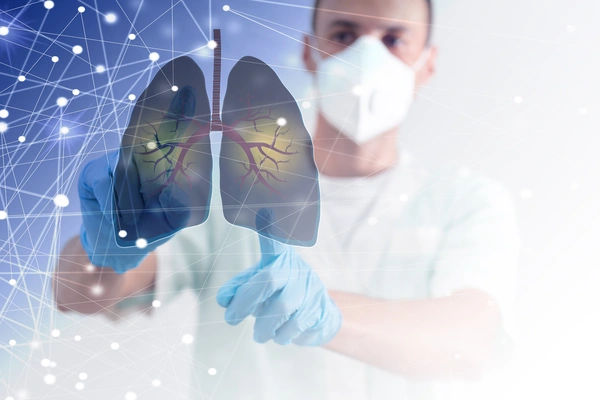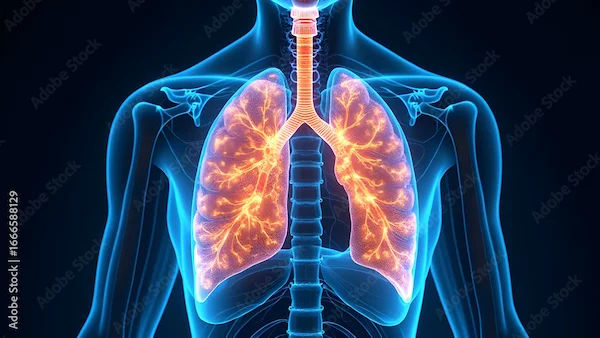Upper Respiratory Infection Signs: A Complete Symptom Guide
Learn the complete signs of an upper respiratory infection (URI), from nasal congestion and sore throat to fatigue. Discover causes, red flag symptoms, and effective relief options for a smoother recovery.


That scratchy feeling in your throat, the sudden need for a tissue, and a general sense of weariness—chances are, you're familiar with the early signs of an upper respiratory infection (URI). Often called the "common cold," a URI is one of the most frequent reasons people visit a doctor or miss work or school. While usually mild and self-limiting, understanding the signs of an upper respiratory tract infection is key to managing your discomfort, preventing its spread, and knowing when it might be more than just a simple cold. This guide will walk you through everything you need to know, from the first sneeze to full recovery. We'll decode what each symptom means, explore the common causes, and provide practical advice for finding relief. Recognising these signs early can help you take the right steps to feel better faster and protect those around you.
What Exactly is an Upper Respiratory Tract Infection (URI)?
An upper respiratory infection is an acute illness that affects the upper structures of your respiratory system. This includes the passageways that air travels through before it reaches your lungs. URIs are primarily caused by viruses that invade the mucous membranes lining these areas, leading to inflammation and the classic symptoms we all know too well. Millions of cases occur each year, making it a ubiquitous part of human health.
The Anatomy of Your Upper Respiratory System
To understand the symptoms, it helps to know the territory. Your upper respiratory tract includes:
Nose and Nasal Cavity: Where air is warmed, humidified, and filtered.
Sinuses: Hollow spaces in the skull that help humidify air and lighten the head.
Pharynx (Throat): A muscular tube that serves as a pathway for both air and food.
Larynx (Voice Box): Contains the vocal cords and helps with breathing and speaking.
When a virus infects these areas, the body's immune response—involving inflammation and increased mucus production—is what causes most of the uncomfortable signs of an upper respiratory infection.
The Most Common Signs of an Upper Respiratory Infection
The symptoms of a URI can vary from person to person and depend on the specific virus involved. However, a core group of signs appears in most cases.
Nasal Symptoms: The First Line of Defense
The nose is often the first point of contact for viruses. The inflammation of the nasal membranes (rhinitis) leads to the most recognizable symptoms.
Runny Nose (Rhinorrhea)
This is your body's attempt to flush out the virus. Initially, the discharge is often clear and watery but can become thicker and yellow or green as your immune system fights the infection. It's important to note that colored mucus does not automatically mean you have a bacterial infection requiring antibiotics.
Nasal Congestion
Swollen blood vessels and tissues in your nasal passages cause that "stuffed-up" feeling. This congestion can make breathing through your nose difficult, disrupt sleep, and affect your sense of taste and smell.
Throat and Voice Symptoms
As the infection progresses down your respiratory tract, it often settles in the throat.
Sore Throat (Pharyngitis)
The inflammation of the pharynx causes pain, scratchiness, or irritation, especially when swallowing. This is often due to post-nasal drip, where mucus from the nose drains down the back of the throat, causing further irritation.
Hoarseness and Laryngitis
If the inflammation reaches your larynx (voice box), it can swell your vocal cords. This results in a hoarse, raspy voice or even temporary voice loss (laryngitis). You might also feel a constant urge to clear your throat.
Coughing: A Complex Reflex
A cough is a vital reflex that helps clear your airways of irritants and mucus. With a URI, a cough can be either productive (producing phlegm or sputum) or dry and tickly. It often starts as a dry cough and may become productive as the infection runs its course. A cough can linger for a week or two after other symptoms have resolved because the irritated airways take time to heal.
Consult Top Specialists Here
Systemic Symptoms: Your Body's Overall Response
Beyond the local symptoms in your head and throat, your entire body reacts to the infection.
Fatigue and Malaise
Feeling unusually tired and generally unwell (malaise) is extremely common. Your body is diverting energy to fight the invader, leaving you with less for daily activities.
Low-Grade Fever
A slight increase in body temperature (usually below 101°F or 38.3°C) is a sign that your immune system is actively battling the virus. Fever creates an environment that is less hospitable to pathogens.
Headache and Body Aches
Generalised aches, pains, and headaches can occur due to the inflammatory chemicals released by your immune system throughout your body.
What Causes These Symptoms to Appear?
The discomfort you feel is not directly from the virus itself, but from your body's powerful immune response designed to eliminate it.
The Usual Suspects: Viruses Behind URIs
Over 200 different viruses can cause a URI. The most common include:
Rhinoviruses: Responsible for 30-50% of all adult colds, they thrive in the upper respiratory tract.
Coronaviruses: Several common types (distinct from SARS-CoV-2) are frequent causes of colds, especially in the winter.
Influenza Viruses: Cause the flu, which is typically more severe than a common cold and involves higher fever and significant body aches.
Respiratory Syncytial Virus (RSV): Common in children but can also affect adults, often causing prominent cough.
Less Common Culprits: Bacterial Infections
Bacteria are responsible for a small percentage of URIs, such as strep throat (caused by Streptococcus pyogenes). Bacterial infections may develop after a initial viral infection, a situation known as a secondary bacterial infection, such as sinusitis or bronchitis.
When Your URI Symptoms Might Be Something More Serious?
Most upper respiratory infections resolve on their own within 7-10 days. However, certain "red flag" symptoms warrant medical attention.
Red Flag Symptoms: When to See a Doctor Immediately
You should consult a doctor if you experience:
Symptoms lasting more than 10 days without improvement.
A high fever (over 102°F or 39°C) that persists for more than three days.
Difficulty breathing or shortness of breath.
Severe sinus pain, headache, or facial pain.
A sore throat that is severe and accompanied by a fever (possible strep throat).
Symptoms that improve but then suddenly return, often worse than before.
If your condition does not improve after trying home management methods, book a physical visit to a doctor with Apollo24|7 for further evaluation. They can determine if a secondary bacterial infection or another condition is present.
How to Find Relief from URI Symptoms?
Since viruses cause most URIs, treatment focuses on managing symptoms while your immune system does its job.
Effective Home Remedies for Symptom Management
Hydration: Drink plenty of water, broth, or herbal tea to thin mucus and prevent dehydration.
Rest: Allow your body the energy it needs to fight the infection.
Humidify the Air: Using a cool-mist humidifier or taking a steamy shower can ease congestion and soothe an irritated throat.
Saltwater Gargle: Gargling with warm salt water can temporarily relieve a sore throat.
Saline Nasal Sprays: These can help moisturise nasal passages and flush out mucus without medication.
Over-the-Counter (OTC) Medications: What Works?
Pain Relievers: Acetaminophen or ibuprofen can reduce fever, headache, and body aches.
Decongestants: Can help shrink swollen nasal tissues for easier breathing (use with caution and not for more than a few days).
Cough Suppressants/Expectorants: Can help control a persistent dry cough or loosen a productive cough.
Always read labels carefully and consult a pharmacist if you have questions or underlying health conditions. If symptoms persist beyond two weeks, consult a doctor online with Apollo24|7 to rule out complications.
Conclusion
Recognising the signs of an upper respiratory infection is the first step toward a smoother recovery. While these common illnesses can be inconvenient and uncomfortable, they are typically short-lived. By listening to your body, prioritising rest, and using simple remedies to manage symptoms, you can support your immune system effectively. Remember, antibiotics are not effective against viral infections, and their unnecessary use contributes to antibiotic resistance. The key is patience and self-care. However, it is equally important to be vigilant for those red-flag symptoms that indicate a more serious problem. Your health is paramount, and seeking professional advice when needed ensures you receive the appropriate care. Stay informed, practice good hygiene to prevent spread, and give your body the time it needs to heal.
Consult Top Specialists Here
Consult Top Specialists Here

Dr Rakesh Bilagi
Pulmonology Respiratory Medicine Specialist
10 Years • MBBS MD PULMONOLOGIST
Bengaluru
Apollo Clinic, JP nagar, Bengaluru
Dr. Naseeha Mohammed S V
Pulmonology Respiratory Medicine Specialist
6 Years • MBBS, MD ,DNB Respiratory Medicine
Bengaluru
Apollo Clinic, Sarjapur Road, Bengaluru

Dr. Sumara Maqbool
Pulmonology Respiratory Medicine Specialist
12 Years • MBBS, DNB Respiratory, critical care and sleep medicine, DrNB superspeciality Critical care, IDCCM, IFCCM, EDIC
Delhi
Apollo Hospitals Indraprastha, Delhi
(25+ Patients)
Dr. Sasikamalam
General Practitioner
1 Years • MBBS
COIMBATORE
Apollo Sugar Clinic Coimbatore, COIMBATORE

Dr Ishan Gupta
Pulmonology Respiratory Medicine Specialist
9 Years • MBBS, DNB RESPIRATORY DISEASES
Delhi
Apollo Hospitals Indraprastha, Delhi
(50+ Patients)

